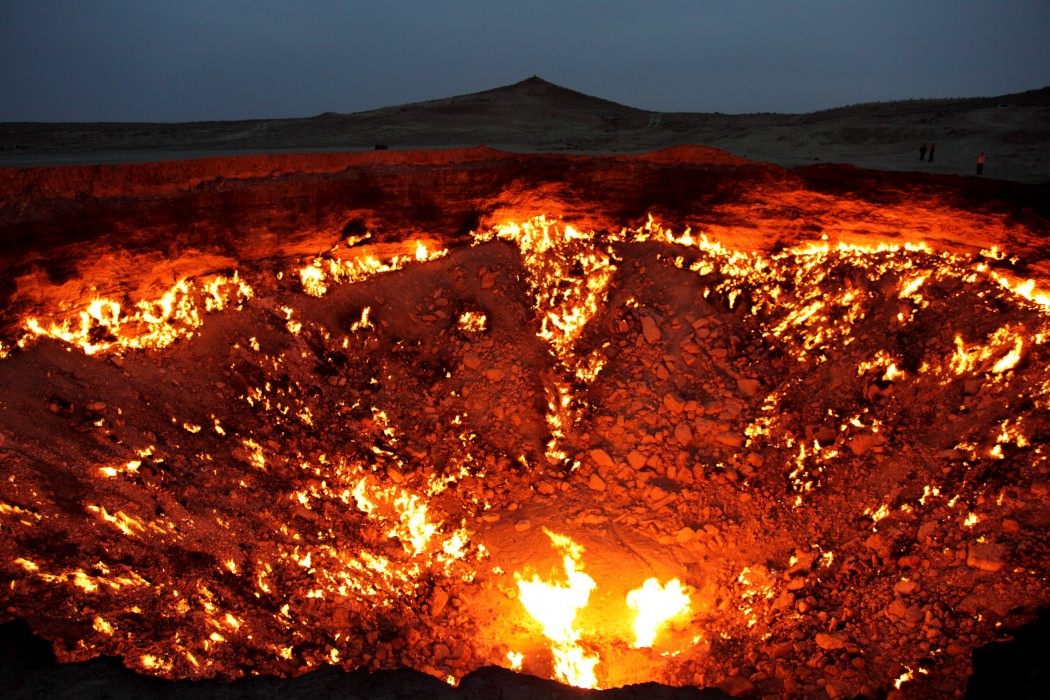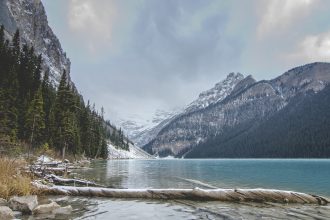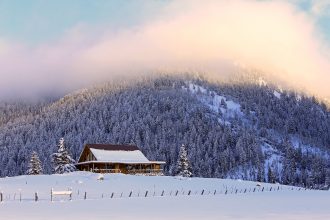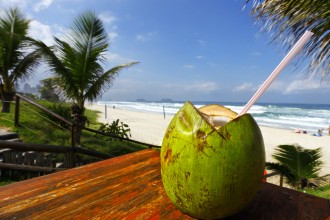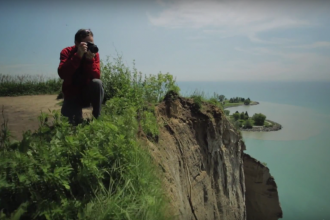When it comes to travel destinations and landmarks, the same names come up over and over again. The Grand Canyon is jaw-dropping; the Eiffel tower is impressive; the Great Wall of China is a feat of human construction. But we don’t talk so much about the weird landmarks of the world—the ones that will make you crinkle your forehead rather than drop your jaw.
Yet the strange can be just as alluring as the beautiful, and so we’ve decided to bring you some of more eccentric wonders of the world. These landmarks are outlandish, mystifying, and just plain weird—and we don’t mean weird like the slightly-interesting tilt of the Leaning Tower of Pisa. We mean full-blown what-were-they-thinking weirdness that will make you marvel at the wackiness of both nature and humankind.
Boll Weevil Monument, Alabama

Photo by C21regencyrealty.com
The boll weevil is an ugly beetle that eats crops, so why did the city of Enterprise, Alabama build a monument to it? Well, early in the twentieth century, Enterprise’s cotton crops were ravaged by the boll weevil—not normally the kind of thing farmers appreciate, but in this case, the destruction forced them to try growing different kinds of crops, including peanuts. By 1917, Enterprise’s county had the largest peanut harvest in America, and in 1919, they built a statue to honour the beetle responsible for their good fortune.
Kindlifresser Fountain, Switzerland
At first glance, this looks like just another colourful sixteenth-century fountain portraying some Renaissance figure or another. But wait, what is it that this well-dressed man is putting into his mouth? Oh right: a baby. As it turns out, “Kindlifresser” translates to “Child Eater.” Created in 1546, the fountain depicts a man (possibly an ogre) chomping down on an infant’s head and carting around several more terrified children under his arm to snack on later. As for what lesson this statue was meant to impart, there are theories, but ultimately, no one really knows. The statue’s message has been lost to history, though the structure itself remains standing to terrify children nearly 500 years later.
Denver Airport’s “Blucifer”

Photo by Mike Sinko/Flickr.com
Airport art tends to be pretty tame — think pleasant landscapes and commercial-looking photographs of happy locals. After all, the airport is where visitors from all over the world are first introduced to your city and culture, and you don’t want to scare them. The Denver International Airport apparently missed the memo, however, when they hired artist Luis Jiménez to create a 9,000-pound, blue, demonic-looking mustang sculpture for the grounds. It’s truly a wonder to behold, reared up on its hind legs, with its veiny flanks bared to the world. The weirdness doesn’t end there, though—the mustang actually killed its creator, when a portion of the sculpture fell on him in 2006. Welcome to Denver!
The Hess Triangle, New York City

Photo by Jason Eppink/Flickr.com
The smallest landmark on this list is also the most spiteful. The Hess Triangle came to be when hundreds of buildings—including an apartment owned by a Mr. David Hess—were demolished to make way for subway lines in New York City. After the buildings were levelled, all that was left of Hess’s property was a tiny triangle of ground, which he refused to donate to the city, and marked as “never been dedicated for public purposes.” Nevertheless, pedestrians constantly “trespass” on the triangle, which, if you don’t examine it carefully, looks like just another piece of cement.
Isla de las Muñecas, Mexico

Photo by Ojoscuriosos.com
“Isla de las Muñecas” translates to “The Island of the Dolls,” which sounds a lot more pleasant than it is. This small island in Xochimilco Lake in Mexico is a garden paradise that also happens to be covered in broken, decomposing dolls, hanging creepily from every possible surface. They were put there by the island’s caretaker, Don Julian Santana Barrera, who (legend has it) found a drowned girl in the lake, and hung the dolls as in tribute to her. His sweet sentiment has resulted in a somewhat macabre-looking place. Still, it’s the thought that counts.
Le Pouce, Paris

Photo by Rog01/Flickr.com
There’s not a whole lot to say about this landmark; it’s just a giant thumb. The sculpture, which is 40 feet tall and made of bronze, sits mysteriously in the middle of the business district of Paris. It was constructed by César Baldaccini as a simulation of his own thumb—just much, much, much bigger. As for the sculpture’s meaning, that’s up to interpretation.
The Door to Hell, Turkmenistan

Photo by Flydime/Flickr.com
Nothing much to see here — just a seemingly-eternally-burning crater full of fire! The “door to hell” can be found in Durweze, Turkmenistan in the middle of a natural gas field. As the story goes, Soviet engineers drilled into the gas field in 1971, and the ground unexpectedly collapsed, creating a crater 69 metres wide and 30 metres deep. Fearing that the crater was leaking gas, the engineers lit the crater on fire, believing it would burn a few weeks. Now, four decades later, it’s still going strong and has become one of Turkmenistan’s best-known and most terrifying tourist attractions.
The Ships of Moynaq, Uzbekistan

Photo by Arian Zwegers/Wikimedia Commons
Moynaq is a typical fishing port in many ways—it’s full of rusty ships and buildings decorated fish and mermaids—but with one exception: it’s in the middle of the desert. This wasn’t the result of boneheaded city planning. Moynaq used to be situated on the shores of the Aral Sea, before the Soviet Union diverted the rivers that fed it in the 1960s, causing it to slowly dry up. The Aral, which was once of the four largest lakes in the world, is now mostly gone, and Moynaq is filled with abandoned boats sitting on sandy dunes—an eerie reminder of one of the worst man-made environmental disasters in history.
The Starship Enterprise, Vulcan, Alberta

Photo by Canoe1967/Wikipedia.org
The town of Vulcan, founded in 1912, was named for the Roman god of fire, but with the introduction of a little show called Star Trek, the town’s moniker came to take on a different meaning. Instead of being annoyed that the town now shared a name with a race of fictional aliens, the people of Vulcan embraced their situation, building a 31-foot model of the Starship Enterprise, as well as a number of Star Trek themed tourist attractions. They even host a yearly Star Trek Convention called “Vul-Con,” which brings a lot of Trekkie tourists to the area. Now that’s some good marketing spin.
Lake Hillier, Australia

Photo by Whenonearth.net
Scientists don’t exactly know why this lake in Western Australia is a bright shade of bubblegum pink (it’s thought that the strange colour might be a result of bacteria). Whatever the reason, it’s a little mind-bending to see a psychedelic pink lake just a few hundred feet from the shores of the (very blue) ocean. Certainly, explorer Matthew Flinders was weirded out when he saw the lake from a nearby peak in 1802. Whether the scientific mystery behind Lake Hillier is ever solved, hopefully its bizarre beauty will continue to astonish visitors for another two hundred years.
Glass Beach, California

Photo by Grindtv.com
Several of the entries on this list came into existence as a result of environmental disaster and human wastefulness. Glass Beach in Fort Bragg, California is no different, but in this case, the results of our carelessness are oddly beautiful. Starting in the early 1900s the beach was used by residents as a dump, where they tossed everything from glass bottles to broken-down cars. However, in 1967, the city stopped this practice and started an initiative to get rid of some of the garbage — a task at which they only partly succeeded. Luckily, the rest of the trash simply biodegraded and was gradually broken down by the waves, resulting in a beach full of worn glass pebbles. It’s a beautiful case of nature undoing the damage humans have created (but please: dispose of your garbage responsibly).
The Park of Monsters, Italy

Photo by Pavlo Boyko/flickr.com
Parks are usually places of respite, but the Parco dei Monstri, or “park of monsters” in Bomarzo Italy, is an exception. The park wasn’t designed comfort or soothe, but rather to express grief and outrage. The mastermind behind this place was Prince Pier Francesco Orsini, who, in 1552, returned home after nearly ten years away at war only to have his beloved wife die soon after. He commissioned artist Pirro Ligorio to fill this garden space with sculptures of monsters, terrifying animals, and gods. It’s speculated that the otherworldly creatures are an expression of his anguish, and five hundred years later, his pathos is still on display for anyone who dares visit.
Also on RNR:
https://youtu.be/TbP4oGZ8R0g

